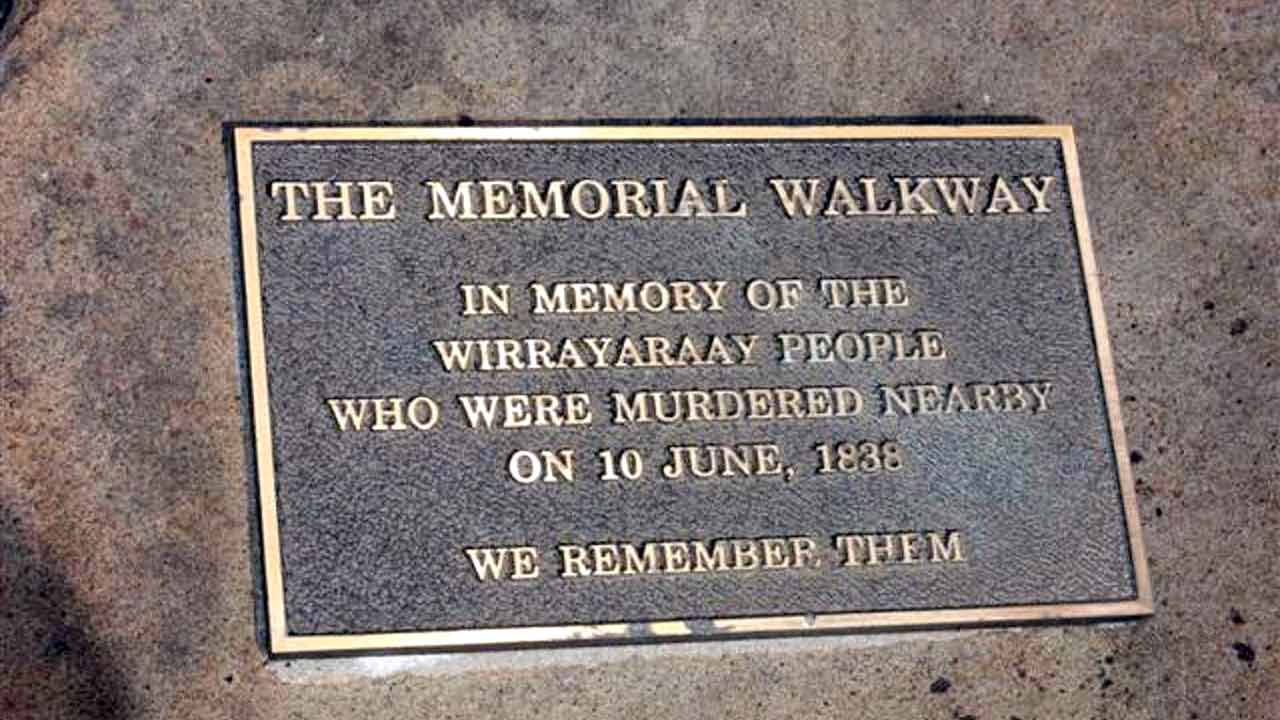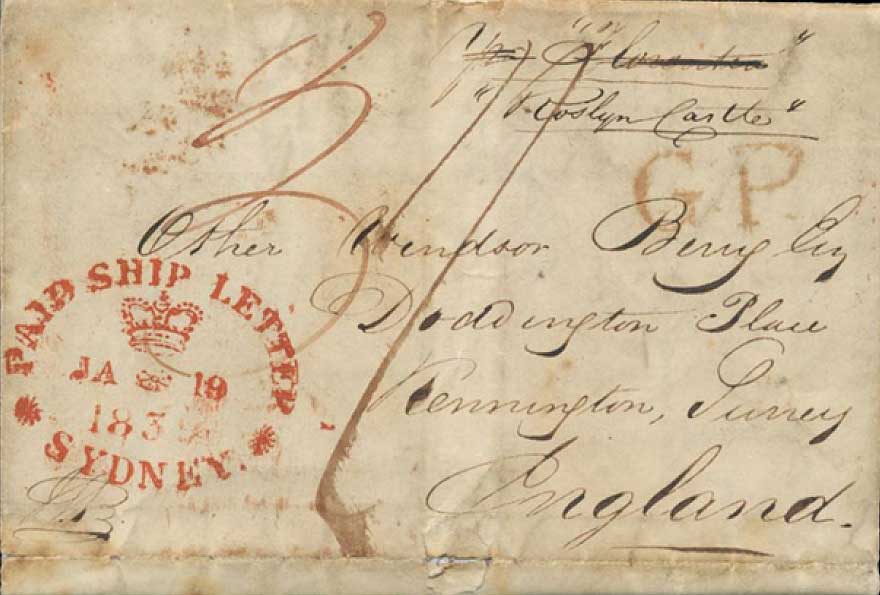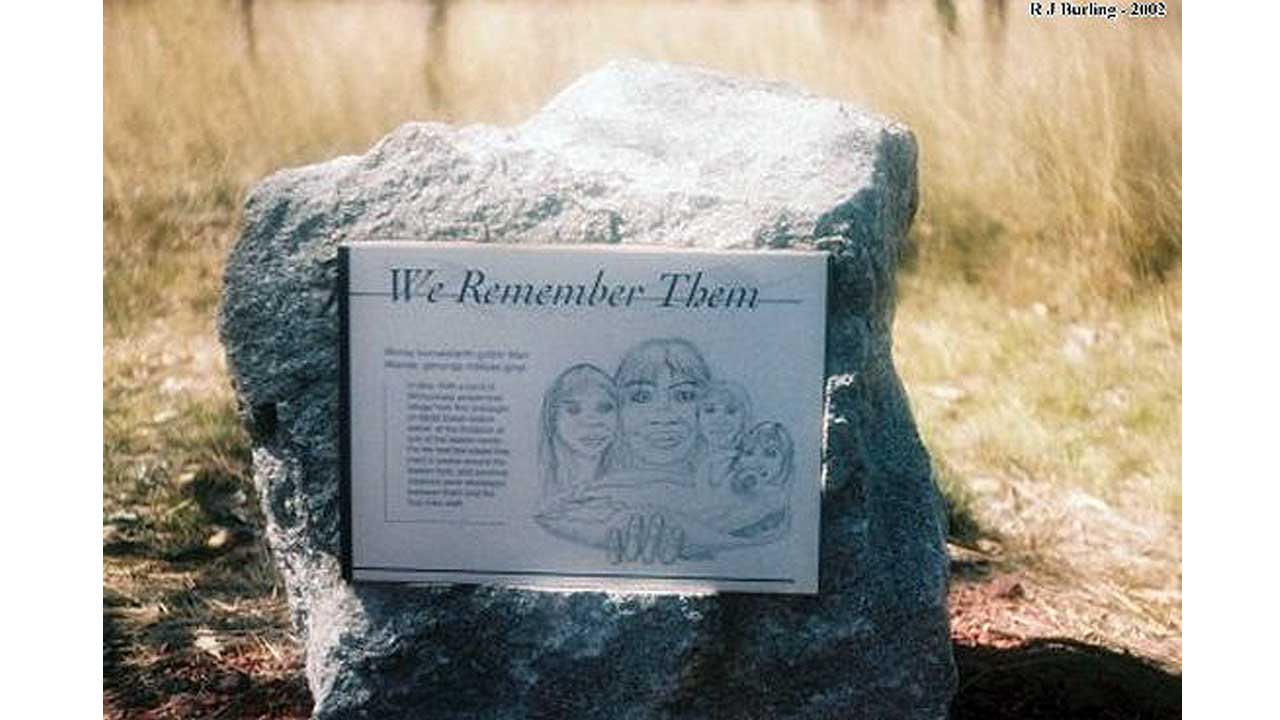As an Elder I am adhering to Aboriginal and NSW government protocol that recognises the unique position of Aboriginal people's culture and history.
Reconciliation to me is based on the basic principal of respect for each other, listening and valuing each other's contributions - recognising that diversity should build communities, not pull them apart, celebrating sameness not differences, acknowledging that difference is negative but can be strength.
We can't relish the present and plan for the future until we resolve our shared past.
It is not a process of blame but one of acknowledgement and acceptance.
Australia has a black and white history full of hardship, struggle and empowerment.
It is by recognising our past and taking hold of opportunities for the present that we can move to a reconciled future.
We still mourn
This gathering still being a mournful occasion, after so many years, I join with you all to show respect to the victims of one of the worst massacres in the history of Australia, whilst giving thought also to those relatives who descend from the seven perpetrators.
We come together here in Gamilaroi country, the second largest Aboriginal nation on the eastern side of Australia, home of the clan of the Wirrayaraay, the people of whom we mourn today.
Although this history records it centuries ago, we still mourn as burial places of Aboriginal people are still considered sacred and significant today.
Today we reflect on their memory, as we come together bound by a sense of strength that represents an important step towards understanding, respecting and encouraging reconciliation as we associate our joint history.
I thank those who have invited me here today to speak and represent my people past and present, still wondering if what I say will be appropriate for this annual ceremony.

The plaque commemorating the June 10 1838 Myall Creek Massacre. Source: The Conversation
The place where Aboriginal people didn't go
Throughout time, every generation has a different story to tell, such as my Great Great Grandmother, Granny Lizzie. Her pet name for me was 'stickybeak' as I grew up in our segregated Aboriginal community.
i was always asking questions of Granny who was born Gamilaroi. I tested her patience by continually asking 'but why?'
I was born in Granny's tin hut situated at the largest Aboriginal camp at the top end of the banks of the Mehi River, thus acquiring its name 'Top Camp.'
My parents married in 1938, and built their hut in front of Granny's. It looked like all the other huts erected from flattened kerosene tins, and old iron or any other scrap that would serve the purpose to build with from the town dump.
The huts had dirt floors, and we had to carry fresh water 'chines style' with bucket and yoke from the nearest house that had a windmill. When there was no wind, we robbed the closest park and animal watering trough at the railway siding, rolling drums under the cover of darkness.
I spent my younger years with Granny Lizzy, cuddling up behind her in the old rusty fold-up bed from the shearing shed, waiting for her to tell me her stories.
Like those who were born tribal, she doesn't remember having a birthday, remembering only that she was born in the hot season.
Her mother, Sally, came from Rocky Creek and gave birth to her in the area now known as Edgeroi, believing their totem was Yurundiali, the Sand Goanna. When young, Granny remembered seeing things from high when they carried her on shoulders. Distances were travelled by foot - no shoes - and when they came to a place where the ground was hot, they tied bark around her feet.
When young, Granny remembered seeing things from high when they carried her on shoulders. Distances were travelled by foot - no shoes - and when they came to a place where the ground was hot, they tied bark around her feet.

A letter about the trial of those responsible for the Myall Creek massacre sold at auction on April, 2015. Source: Supplied
They didn't stay at this place for long and when they left, nothing was to be taken from there, especially the coloured stone as it was considered like taking from 'Mother Earth' and bad luck. This would have been at Lighting Ridge.
They followed the seasons for food, knowing what grew when and where, and after heavy rain or flood they went to a place with rocks in the river and ate fish for weeks. This would have been at Brewarrina.
'Up that way', she would point to the east saying they would all meet at a place with big rocks and a swimming hole. They would settle arguments and who could marry who. This would have been Cranky Rock.
When they settled at the first Reserve in Terry Hie Hie, she said there was a place not far from there 'the men's place', and women were not allowed. This would have been the largest Bora initiation ground in the district.
Granny would lower her voice and look sad, and said there was a place where Aboriginal people didn't go anymore. "Big fight?," I asked.
"No, no bad place, bad place, terrible thing happened there, all killed by white fellows."
She pronounced the place as BIN-Gar-A not Bingara, for she spoke her own language. Granny was our family and community Elder, she was our lore/law, she even controlled the adults. All family decisions went through her.
Her youngest son Uncle Toona carved for her a pipe and a walking stock which he was sorry for at times for when he drank 'metho' and came home frunk she took to him with her walking stick and he was not allowed in thier ut until he sobered. I remember Granny always smelled of smoke from her pipe and the open fire place in the hut. She had pet possums in the large gum tree to the left of her hut and her lore of not caging or tying up animals or birds is still adhered to.
My favourite Uncle Toona died of recurring malaria in 1949, he was in WWII, Granny died in 1952 and Nanny Duncan's daughter died on 1954. I could not say goodbye to them as children were not allowed to attend funerals back then.

Myall Creek Memorial. Picture: R.J Burling 2002. Source: Supplied
Documenting our history
Being new to Moore the new Manager of the Town Library in 1994, asked me: "Why Aboriginal people didn't come into the library?"
I replied: "because of the Moree Council Acts banning people of Aboriginal appearance and any with an admixture of Aboriginal blood from municipal building and the baths."
Moree was the only town in Australia with municipal acts banning Aborigines, and segregation flowed through to death with a segregated Aboriginal portion in the Moree Cemetary.
But the visit of the Freedom Ride saw the acts changed.
The Freedom Ride brought about slow change and Aboriginal people have known the baths act was changed to being of 'unhygienic appearance', but never knew for sure if the municipal building acts were lifted.
i was then asked to please apply for the position advertised in the Moree paper for a Library Assistant. Being successful, I was placed in a designated Aboriginal position of the town library by the Manager, Mrs Wendy McGregor and Councils General Manager, Mr Mike O'Reilly, to encourage Aboriginal people to enter in 1995.
Those who held Aboriginal people's interest at heart soon realised that our community needed a service beyond books.
The Manager of the Regional Library included in her policy that the library would be developed as a Keeping Place for Aboriginal history, culture, political, vocational and education information.
Family genealogies and photographs became a draw card as knowing one's family, people and origins became of paramount interest, due to the lack of documentation during early European settlement.
Thousands of family history and photographs, plus social history were given and archived for future generations to access.
This saw Aboriginal people now entering the centre with the Aboriginal flag that caused much debate, to be flown externally to show there was a service for them within as they were now more comfortable and less intimidated by entering the building, and usage improved with sourrounding Aboriginal settlements that included people coming by buses to the centre from all over New South Wales.
This set a precedent for all other Aboriginal communities to follow. And we visited all the major cities throughout, showing how the centre was first established. With help I founded the Moree Aboriginal Dhiiyaan Centre that became a Kamilaroi Keeeping Place for nigh on 16 years.

From Moree's racist past. Pic: YouTube/'Racial segregation and the Freedom Rides - Moree' Source: YouTube
Moree and our Keeping Place
About four years later an employee of Council, Mr Jim Boyce asked me if I could help him arrange for Moree Elders to gather at a place called Myall Creek.
We arrived at this hall and the Elders from Moree were greeting other Elders from the district, talking about a memorial for those massacred. It was then I realised that this was the place that hurt my Granny Lizzie speak about many years ago. The decision was made for the memorial to go ahead.
Our Keeping Place was closed in August 2010, when the New Town Library was established leaving our Aboriginal services behind to flounder. I resigned in 2011.
Moree Aboriginal community has shown great strength and resilience over the years, while still struggling to deal with and have their past history accepted. Like most communities, it has its fair share of adversities but through these adversities we all find our strength.
The foundation I received growing up in my Aboriginal community, has made me the person I am today, that has led to the success I have achieved, learning from my family Elders, the values, resilience and strength. My family attributed to a strong faith in myself, and no one will take that away from me.
I lived through segregation, nothing will hurt me after living through that.
I have received numerous awards that reflect the value placed on my contributions as I dealt with changing attitudes that saw us all survive many hardships based on ignorance, racism and good intentions.
I look back today and continue to be inspired by their determination and foresight.
I joined Myall Creek Committee to join in the struggle for a desperately needed National Aboriginal Keeping Place.
Other countries throughout the world have their keeping places, and I believe that Aboriginal history not only enhances local history, it benefits the history of our Australian nation.
I feel humbled to speak at this event for those massacred were of the Kamilaroi nation.
Our National Keeping Place is too long overdue. Let's do something about it.
Gaba Nginda Winanga-Li. Thank you for listening.

